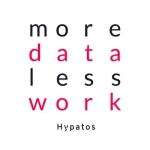What is our primary use case?
We use the solution in pharmacy health care, and our role is to enable doctors so that they can set up a personalized clinic - everything a patient requires. We get information in the form of a document and we can break it down into sheets and JSON files, for example. We use a UiPath documentation tool.
How has it helped my organization?
Document understanding has helped us increase our efficiency and accuracy. We don't have to manually check data again and again.
After the first month, we discussed how the solution was benefiting us, and we decided to continue with it.
What is most valuable?
It helps with data and consistency. It helps us receive information and convert it so the systems we have in place can understand a problem and generate responses accordingly.
We've used it in one process where we received a patient's pharmaceutical documents from other sources that come in different formats. We receive the formats, convert the information into a standard format, and then process the information to provide information for insurance forms.
The average document size is not very large, likely 80-100 MBs. However, the total count of the patients is somewhere around 10,000.
We have 50% to 60% of clients directly onboarded via an insurance form. Therefore, we are provided with the exact form we need and can run a complete automation on that. There's no type of manual involvement there.
The format for setup is a great thing. Earlier, the tool that we used was pretty manual. In this case, it's a bit easier for our developers.
The solution can detect signatures to let us know that there's a signature there. You can construct tables or any other format of data based on pure text information.
They are employing an ML model for detection conversations. They are also trying to deploy a written-to-text conversion. They are convinced AMR systems will replace other manual work.
The main value of AI for us is to convert data formats from one type to another. We receive data stating two or more complex data points mixed later, for example, the license number and the serial date of operation for the doctors or the patient code; sometimes these things are mixed together. We want all those to be arranged. Their AI does the job very well.
We can integrate document understanding with other systems and applications. With it, we can simply write down a code to communicate with the ML model, for example, how to convert the data and which datasets to look for precisely in the documentation. We were able to communicate easily what would be the format of the PDF documents that we would be providing. The integration part and communication was the best aspect of the entire application.
We have Veracode integrated with it. We will do a manual check if we get a security flag where the data may be inconsistent. We usually get an alert like this once or twice a week. The human validation process usually takes an hour since we have to manually check the parameters. Before implementing the solution, the handling time before automating the process was pretty much the same. With this, we may have reduced it by half an hour. Also, previously, we'd have more manual interventions happening, maybe three or four times a day; however, now, with everything automated, that only happens one or two times a week. It's reduced the frequency by about half an hour on average.
Using the solution has freed up staff time. We've reduced our team size in regards to quality checking. We've reduced the amount of work by 40 to 50 hours a week.
What needs improvement?
UiPath's documentation tool is not great with converting handwriting to text, so we only used it for the conversion of insurance documents into other formats.
They could modulate the ML model in the future. When it comes to working with data and processing reports, we have to target the datasets we had earlier targeted and redefine the parameters, which takes a lot of time. If the ML model, at the time it is analyzing the data, could in itself provide the insights we will need for future reporting, that would be great. There needs to be better real-time analytics since we aren't getting the data for reporting until we go and seek it out.
If there were more integrations with Veracode or the AWS server, so we don't have to completely transfer our data and keep data on our servers, that might increase security.
For how long have I used the solution?
I've used the solution for a year or so.
What do I think about the stability of the solution?
The solution is good. It's very stable.
What do I think about the scalability of the solution?
It's not deployed across multiple departments. We have this deployed across one department. We have two developers working with the stream of data.
For small to medium firms, the solution scales well. However, if you are going for a global scale, you should develop your own models and not rely on outside models.
How are customer service and support?
Support is good. That said, sometimes they have problems understanding what we want to do with the data since we cannot provide the data in its raw format. We have to decrypt it. This makes it a bit harder. That's why we would like integration on our servers instead of theirs.
How would you rate customer service and support?
Which solution did I use previously and why did I switch?
We did use a different solution previously. We switched since the number of tags we were getting was pretty high. We had to do more manual interventions a lot more often. The parameters we used to communicate were also manual. It required setting up a decision tree in the whole of the document. A lot of the time, we would not know what the document type would look like. It required the developers to look at the documents, create a decision tree, and go from there. With UiPath, we don't need to do all that manual upfront work.
How was the initial setup?
I was a project manager, not a developer, deploying the solution. My understanding is the process was moderate. It was eight too easy or too complex.
The implementation involved discussing the work with the insurance firm. We explained we were moving from one system to another. Once we had that conversation, we received the documentation in the format we wanted.
Then, we looked at how we encrypted our data before sending it to UiPath servers. We did have a lot of compliance issues and had to be careful.
Once we came to the physical implementation, that was easy. Managing other stakeholders and their clients was the hardest part.
We had three developers from our team working on the deployment. It took us about 10 to 11 days to deploy.
Twice a week, maintenance is needed whenever there's a flag raised when data points do not match. We can simply ignore the solution and change the data file, or we can go in and see what is wrong with the file type and adjust it so that it doesn't happen again.
What about the implementation team?
We did not use any outside assistance beyond the help of UiPath's support team.
What was our ROI?
The ROI is pretty good. We did not do any calculation for ROI. However, the accuracy percentage and time reduction which we noted, have made us happy.
We originally noticed a time to value for UiPath within 10 to 12 days.
What's my experience with pricing, setup cost, and licensing?
The pricing is pretty fair. It is quote-based. Overall, it's fair. If you are a small firm looking to scale up, it is good. Enterprises should create their own ML model instead of relying on some outside product.
Which other solutions did I evaluate?
We looked at a few other options and did a few POCs. UiPath is able to sense and analyze a document and create a hierarchy for you. You can also create a manual code if you want something done differently. The only issue is we have to upload the information to UiPath servers, which may be a security issue.
What other advice do I have?
We're end-users, not integrators.
It's a good idea to have a call with the support team and managers and do a review to understand the solution to see if the product would work with your type of data. It's important to test it out, ideally using your own data.
I'd rate the solution nine out of ten.
Which deployment model are you using for this solution?
Private Cloud
Disclosure: PeerSpot contacted the reviewer to collect the review and to validate authenticity. The reviewer was referred by the vendor, but the review is not subject to editing or approval by the vendor.




















